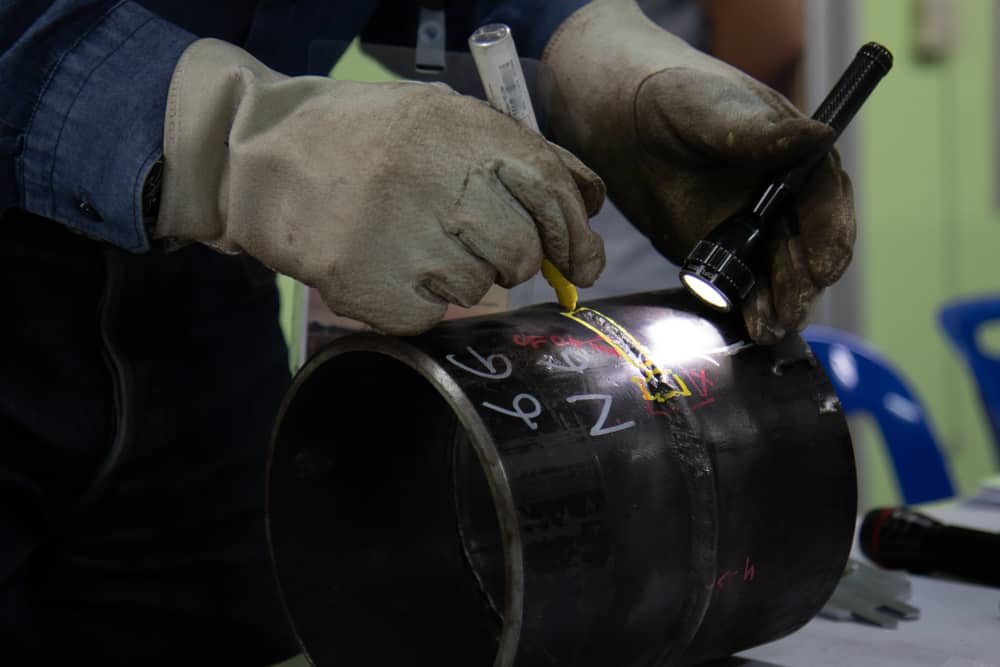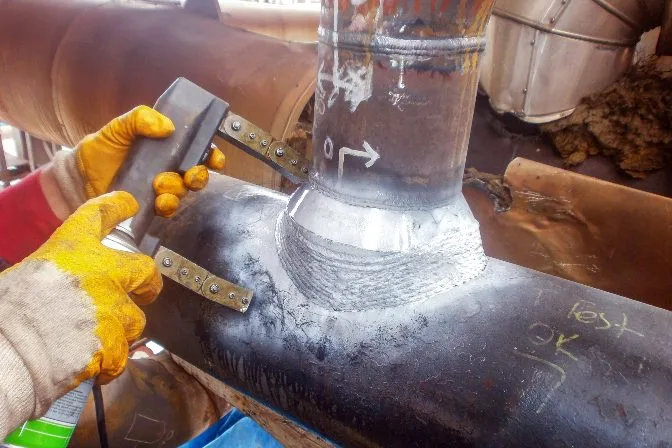Checking Out the Principles of Welding Examination: A Detailed Assessment of Processes, Tools, and the Importance of Quality Assurance in Welding Industries
Welding evaluation offers as a keystone in the maintenance of safety and structural stability across various markets. Recognizing the effects of these methods elevates important inquiries concerning their effectiveness and the future instructions of quality assurance in welding.
Value of Welding Inspection
Welding inspection plays an essential role in making certain the stability and safety of welded frameworks. It works as an organized approach to assessing weld top quality, recognizing prospective flaws, and guaranteeing conformity with recognized criteria and requirements. The significance of welding assessment extends past plain adherence to policies; it is essential in securing human lives and shielding investments in infrastructure.
Defective welds can bring about catastrophic failures, leading to substantial economic losses, injury, or loss of life. For that reason, strenuous assessment procedures are vital to detect concerns such as insufficient infiltration, porosity, or cracks prior to they intensify into crucial failings. Furthermore, reliable welding inspection contributes to the general performance and durability of frameworks, making sure that they can endure the conditions for which they were designed.
Furthermore, the execution of welding examination fosters a culture of high quality and liability within the welding industry. By prioritizing inspection, organizations show their commitment to excellence, thereby boosting their online reputation and competitiveness in the market. Ultimately, welding assessment is not simply a procedural step yet an essential part of design integrity and safety and security assurance, vital for the successful implementation of welding tasks throughout numerous industries.
Trick Evaluation Processes
A comprehensive approach to welding evaluation includes several crucial procedures that are necessary for guaranteeing weld high quality and structural stability. The initial vital process is aesthetic assessment, which allows inspectors to determine surface area issues such as splits, porosity, and inappropriate grain appearance. This method works as an initial assessment to guarantee that the weld satisfies specified criteria.

Furthermore, harmful screening might be performed on sample welds to analyze their mechanical residential or commercial properties and performance under tension. This process includes effect, fatigue, and tensile screening to confirm that the weld can withstand functional problems.
Lastly, documents and coverage are critical components of the inspection procedure. Preserving exact documents of evaluations, observations, and examination results assists make certain compliance with market criteria and promotes consistent enhancement in welding methods. Jointly, these vital processes develop the backbone of efficient welding assessment and quality control.
Tools for Weld Assessment
Many devices are crucial for effective weld analysis, each made to examine various facets of weld top quality and efficiency. Among the most extensively made use of are visual inspection tools, including magnifying glasses and borescopes, which allow assessors to identify surface area defects such as fractures, porosity, and improper combination.
Furthermore, ultrasonic testing (UT) devices is critical for finding inner flaws. This tool employs high-frequency audio waves to disclose gaps within the weld, guaranteeing the honesty of the product. Radiographic testing (RT) tools, which make use of X-rays or gamma rays, in a similar way supply understanding right into the internal structure of welds, permitting the recognition of gaps or inclusions.
For accurate measurements, calipers and determines play a substantial duty in establishing weld measurements and guaranteeing adherence to specified resistances. Solidity testers review the mechanical residential or commercial properties of the weld, ensuring it meets efficiency standards.

Techniques for Examining Quality
Just how can the quality of welds be reliably assessed? A selection of techniques are employed to assess weld stability and make certain adherence to specified requirements. Visual examination is one of the most fundamental method, permitting examiners to recognize surface flaws such as splits, porosity, or undercutting. This non-destructive technique functions as an initial evaluation prior to even more innovative approaches are used.
Ultrasonic screening (UT) is an additional popular method that makes use of high-frequency audio waves to spot internal flaws within the weld. Houston Welding Inspection. This technique supplies a comprehensive view of the weld's stability without endangering its structural integrity. In enhancement, radiographic screening (RT) employs X-rays or gamma rays to reveal interior problems, offering thorough understandings into weld top quality
Magnetic fragment screening (MT) works for discovering surface area and near-surface stoppages in ferromagnetic products, making use of magnetic fields and tinted particles to highlight flaws. Finally, dye penetrant testing (PT) can be employed to reveal surface-breaking problems by applying a color that seeps right into cracks and is subsequently exposed.
Compliance With Sector Specifications
Conformity with sector standards is crucial for making certain the high quality and security of bonded structures. These requirements, developed by organizations such as the American pop over to these guys Welding Culture (AWS) and the American National Criteria Institute (ANSI), supply standards that regulate the welding procedure, products, and inspection methods. Following these standards not only ensures the structural stability of welds but additionally alleviates risks connected with failures that might lead to catastrophic consequences.

Welding examiners are read this post here entrusted with validating compliance with these requirements throughout the welding procedure (Houston Welding Inspection). This entails assessing welding treatments, checking welder qualifications, and conducting extensive evaluations of the last product. Non-compliance can lead to significant monetary repercussions, task hold-ups, and damage to a company's reputation
Normal training and updates on requirements are crucial to keep workers educated and experienced, making sure that all aspects of welding procedures meet or exceed governing demands. Eventually, commitment to sector requirements offers as a structure for excellence in the welding industry, promoting safety and security and dependability in bonded structures.

Final Thought
In conclusion, welding evaluation serves as an important component in keeping the safety and security and honesty of welded structures. Adherence to market requirements guarantees conformity and promotes a society of quality within the welding industry.
Furthermore, the implementation of welding evaluation cultivates a society of high quality and responsibility within the welding sector. Eventually, welding assessment is not just a step-by-step action however an essential part of engineering integrity and security guarantee, crucial for the successful implementation of welding projects across different markets.
A comprehensive strategy to welding examination entails numerous vital processes that are important for making certain weld high quality and structural honesty. These criteria, developed by companies such as the top article American Welding Society (AWS) and the American National Specification Institute (ANSI), supply standards that control the welding procedure, materials, and assessment protocols.Welding assessors are tasked with confirming conformity with these standards throughout the welding process.
Comments on “Affordable Houston Welding Inspection Services for Your Construction Needs”